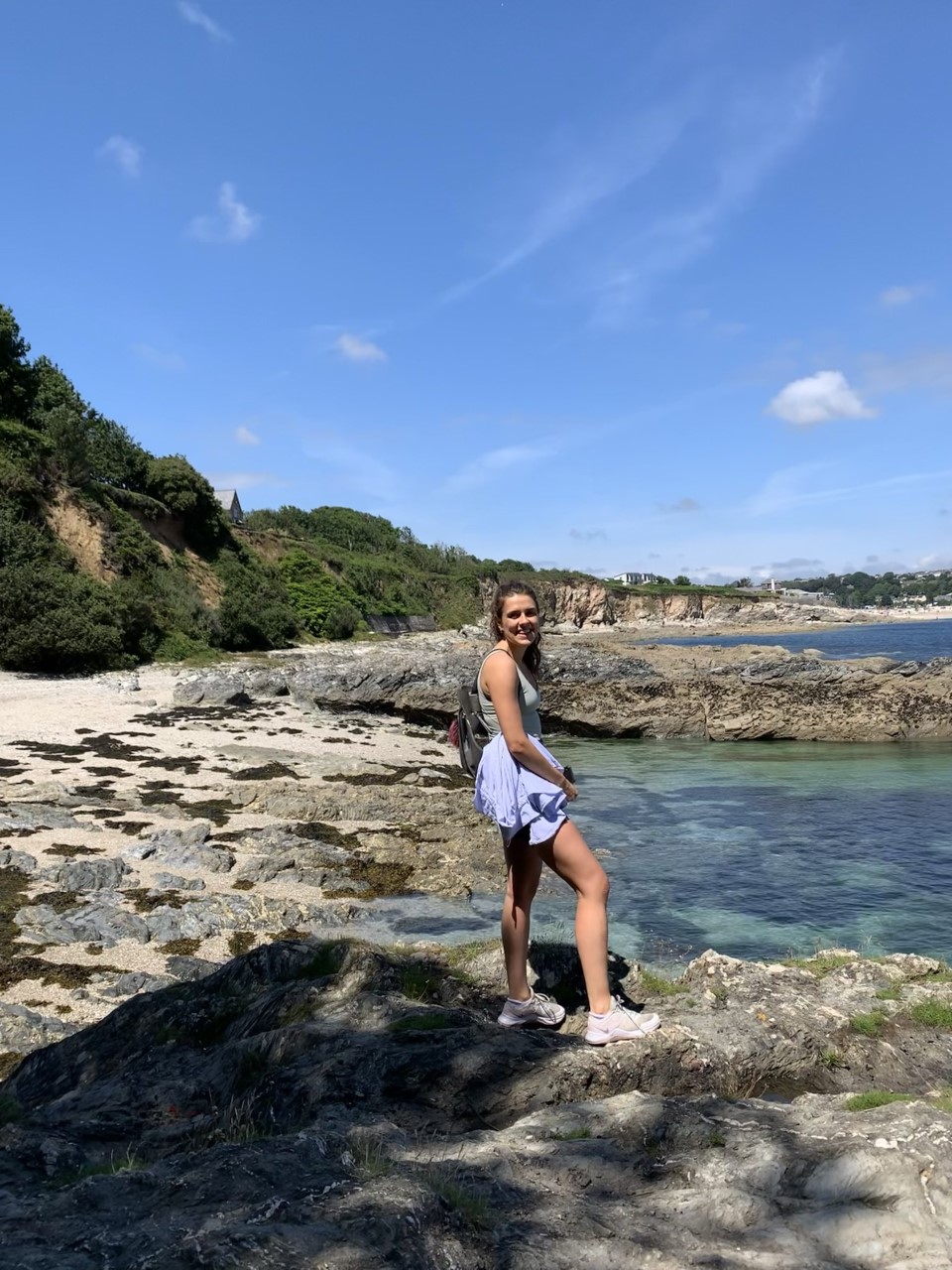Walking is a low intensity, low impact exercise – so why did a seaside hike leave fitness writer Chloe Gray with muscle aches?
I’d planned to spend my three days in Cornwall hiking, swimming and sightseeing. The weather was curiously gorgeous, the location was ripe with walking opportunities and I’d packed a suitcase full of trainers and activewear. What I hadn’t factored in was the fact that I wouldn’t be able to get out of bed after the first day.
My best friend and I had hoped out of bed that morning ready to walk. We’d headed out for an explore lasting around five hours, stopping once for a fueling brunch that we gobbled down in less than 45 minutes. We’d walked through mountainous terrain, coastal pathways and city centre pavements. While it was knackering, and we came home ravenous, at no point had I felt my muscles fatigue. Even when climbing up hills and scaling over rocks, my legs never felt tired in the way they do after a set of heavy squats.
You may also like
Walking for fitness: what muscles does walking work?
But the next day, my limbs felt heavy. Stretching my calves was agony, my feet could barely take the feeling of my squidgy sandals and my hips felt aged. Walking was, in my mind, a gentle workout – why did I have such bad DOMS?

Is it normal to have muscle soreness after hiking?
According to Clare Silvester, physiotherapist at Ultra Sports Clinic, hiking is tougher on your muscles and joints than you might think. “It depends on your terrain, but generally walking uphill will work your hamstrings, glutes and calves,” she explains. “Walking downhill will eccentrically engage your quadriceps and calves to control the lengthening of the muscle. Eccentric loading is one of the main type of exercises that will put you at risk of post-exercise pain.”
And while walking may be low impact compared to running, you’re still working through a large range of motion over a long period of time. “Even your feet will move through their full range as you lift and point them up and down. On uneven terrain, your ankle joints will be constantly correcting themselves to steady you which can also put your lower legs under a lot of load,” Silvester adds.
She also reminded me that DOMS don’t only come from pushing your weights in the gym, but from doing any form of exercise that your body isn’t fully adapted to yet. “The prolonged nature of doing something like hiking for many hours will overload your muscle fibres and work them in a way that they’re not conditioned for. That’s what causes the micro trauma that can lead to pain or stiffness,” says Silvester.
You may also like
Walking: 8 of the best hiking shoes to buy now (and why trainers simply won't do)
4 ways to reduce DOMS from walking
“In an ideal world, you would slowly build up your hiking length so your body can adapt. That’s obviously not always possible, as if you are only away for a few days you end up having to do things your body isn’t used to,” Silvester says.
However, there are ways to make post-hiking holiday pain feel a little better.
Foam roll
When I got home, I rolled out my calves and feet using a trigger point ball and my Theragun. It hurt – but it helped the tightness release.
Stay hydrated
“Keeping hydrated when walking is really important,” says Silvester. Walking in hot weather is a sweat fest, meaning you lose water. But your muscles need water to help them properly contract, so keep glugging.
Refuel
If you might think pre- and post-workout nutrition is only a consideration for marathon runners, you’d be wrong. “Don’t go for hours without food while walking. You need to be well fueled to avoid DOMS,” says Silvester. Replenish hard-worked muscles with carbs, protein, magnesium and potassium to support muscle recovery and energy levels.
Keep moving
“The best advice is to keep moving,” Silvester adds. That doesn’t mean head out on another huge hike or hit the gym (because, ouch) but make sure that the muscles are getting blood flow to avoid further stiffening up. “You could try a gentle stretch, go for a swim or a slow cycle.”
Source: Read Full Article
